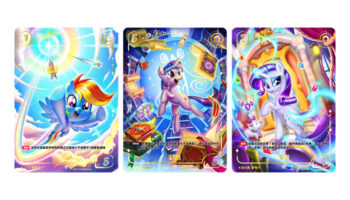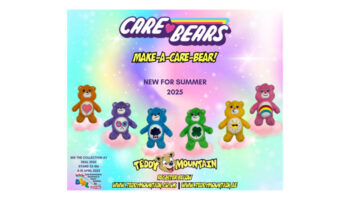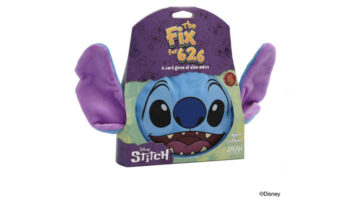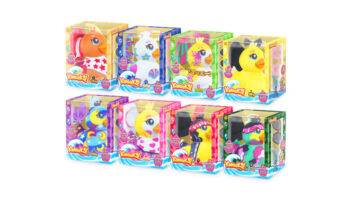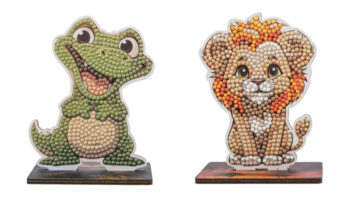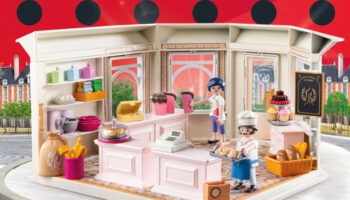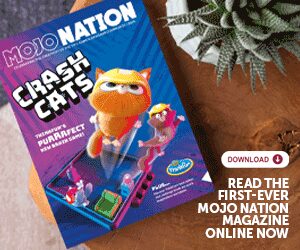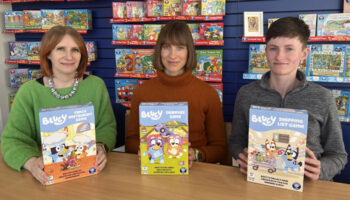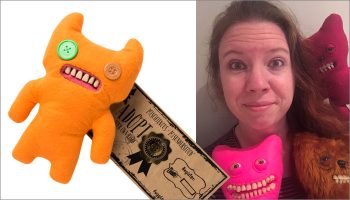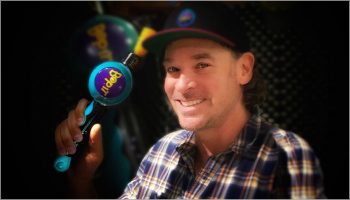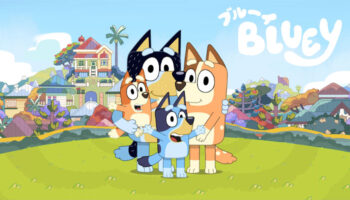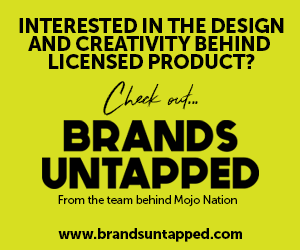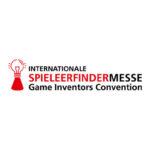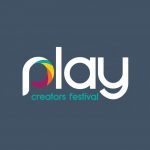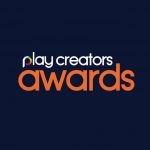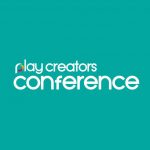Serena Fadlun on Danger Hugs, Swapple, Happy Haven – and the key to successful inventor collaborations
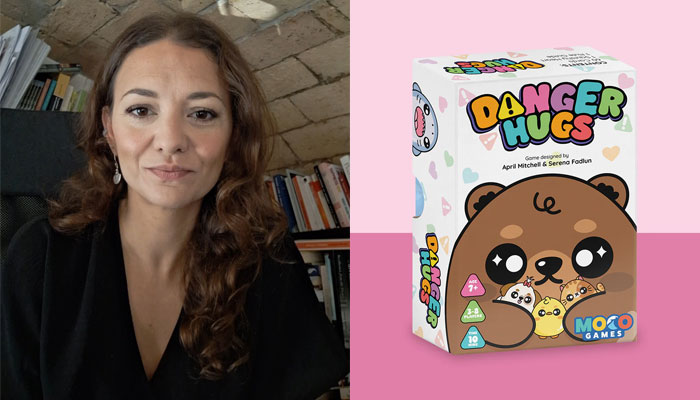
Serena, it’s great to catch up. To kick off, what was the spark that set you on the path into game design?
Spark is the right word because it was a bit of a random spark! I’m trained in psychology – I have a Psychology degree and my first career was in psychological research. I did my degree in New Zealand and then I moved back to Italy where I was raised and I currently live. It didn’t make sense to continue with the research here because unfortunately there is no funding opportunities for that here, so I started working as a translator for movies and TV shows. That was really fun – and then when I was pregnant with my son, I had a dream.
In the dream, my son was like three or four and he was playing with something. I asked him what it was and he said: “What do you mean? You invented it!” That dream planted a seed in my mind and I started looking at how to bring that product to market. That’s when I found out that people can work as inventors and license their ideas. A whole world opened up to me.
Did it feel natural for you to start inventing?
Yes – I felt like I was born to do it. I’ve always been super creative. In Italy, we say: “An idea volcano” and that’s what they used to call me as a kid. I always came up with things – ideas for movies and books and inventions. So yes, I thought this could be really fun and I started obsessing over it. I felt a pull and I just kept coming up with games. Right when I was thinking about that, I saw your interview with InventRight’s Stephen Key. I thought ‘Maybe I should talk to him’. The rest is history.
Yes I remember having a chat with you back then and you were incredibly passionate about this, even at the earliest stage.
That first conversation with you was really helpful in terms of how I should get ready, prepare my concepts and just how to approach things. The interviews on Mojo Nation became my bible! That’s how I started, and I was very lucky to collaborate with some really great people.
I’m delighted we could help! And let’s talk more about those first steps and your first inventor collaborations.
When I started, I had lots of innovative ‘out of the box’ ideas, but I didn’t have the experience or the knowledge to develop them. I read lots of books, but experience is not something that you get just by reading about it. I approached a few people and collaborated with some great inventors, which helped me grow a lot and very fast. Everyone was super nice, and I even got meetings with huge companies in the first two weeks of trying to contact them.
Wow!
Yeah, I thought: “OK, this is easy!” And it worked out worked out quite well initially. I signed my first deal in the first couple of months of pitching. That was great, and then it became a little harder… My son is very young, so I’ve never been to live shows. I haven’t really been able to meet people in person. But it’s been a journey – and you get better at taking rejection because that was something that I had to learn. I’ve been a perfectionist all my life and rejection wasn’t something I was initially comfortable with!
And what was that first thing you got over the line?
Well, the first one that I signed didn’t end up making it to market. The company changed their mind during development. So, the first one to actually hit the market is Danger Hugs, which came out a couple of months ago from MoCo Games and is co-designed with April Mitchell. A few of the other games we signed are hitting the market now, which is exciting.

Yes! How did you and April come to work together?
April and I were introduced by a common friend – Warren Wilson. He invented a toy in the Nineties called BetterBlocks. He said: “You two should meet each other”. I pitched her an idea because she already had a few deals under her belt. That idea was the first idea that we ever signed together. We worked really well together and from there we started to collaborate all the time. We’ve signed three deals together now.
Terrific! And where did the idea for Danger Hugs come from?
April and I are both mothers. We always tell our kids: “Hugs are nice.” But they can’t hug just anyone, because then it gets dangerous. We were joking around with this concept that some hugs are good and some hugs are dangerous, and then we brought animals into it. You can hug a dog sometimes, not always… You can’t hug a shark… It went on from there and became a very fast paced party game.
And you’ve also signed Swapple with April. This one with Gibsons.
Yes! Gibsons did an amazing job with that one. It’s so beautiful. They did it as a collaboration with the RHS, so there’s plants and flowers. It’s so gorgeous.

Was this designed with the Royal Horticultural Society in mind?
No, we had a completely different theme. It was snakes initially! I read Jesse Schell’s book The Art of Game Design. In the book, he mentions about challenging assumptions, and I loved that. So the idea here was that usually your assumption in a game is that you have a goal and that’s going to be your goal for the whole game. We said: What if you don’t? What if you could swap goals with someone else during the game? That’s how Swapple came about.

Sounds fun! And what would you say is key to a successful inventor collaboration?
I had a few collaborations. I regularly collaborate with April, as well as with Ellie Dix and Brad Ross. Those three are my main collaborations and each is very different.
With April, we’ve built a beautiful friendship. There’s incredible respect between us. We are very supportive with one another in anything and everything. All the successes that she has on her own and the ones that I have on my own, we’re always cheering each other on. She’s a wonderful person – and we work in different ways. I like to do things that are a bit complex or completely ‘out there’. She understands my vision, but she has more experience than me and is really good at family games. My ideas are very abstract, while she thinks in a more concrete way. When we put them together, it’s a winning mix. My ideas would be too complex without her – she brings me down to earth and she adds that special thing that makes it work.
Then with Ellie, she’s just brilliant. She’s very practical and very quick. I found her to be a breath of fresh air because I’m also very obsessive! We said: “Let’s do this” and in two weeks, we had everything ready to playtest. The way she thinks is very similar to me and that works well. It proves you don’t have to be different for this sort of thing to work.
And then with Brad, he’s a very experienced designer. He’s been in the industry forever and everyone knows him. All his knowledge and wisdom really brought me to the next level, both in terms of my relationships with the companies and the quality of my games. His experience means that when I pitch him a concept, he already has a vision of what could work and what couldn’t work. In five minutes, he has it all broken down – and it’s things I wouldn’t have thought about.
But with Ellie, Brad and April, I’m learning from all of them, and hopefully they find something useful in me as well. Otherwise, they wouldn’t be working with me!
You’ve also recently self-published a game that’s grounded in your previous work in psychology – Happy Haven. Tell me about that.
Well, I have a bit of an obsession with the study of happiness. I love positive psychology which is the field of psychology that studies happiness and wellbeing. Over the last 12 years, I’ve been learning everything I can about happiness and then I thought I should run a scientific study.
It started with this idea that I should design a game based on factors that research has demonstrated make people happier. I’d take some of the components of positive psychology and incorporate them into a game to see what comes out. I started from the PERMA model, which is a model of happiness by Martin Seligman, the founder of positive psychology. The PERMA model illustrates five factors: Positive emotions, Engagement, Relationships, Meaning, and Achievement. It’s a very well-respected model which says these are the five things that make people happy in life.
I designed a co-operative game that has five categories of cards. Each category is designed to basically increase one of the five factors that make people happier. Everyone’s together, starting conversations or achieving team tasks. Once they achieve one of the cards, they put it face down on the mat. When all the 15 cards have been achieved, you’ve built an oasis. You start with a desert and by placing these cards down, you build an oasis.

Nice! And the idea is this game makes people happier?
Yes, but I had to be sure! So I ran a scientific study using the PANAS scale – it’s a questionnaire used in happiness research to measure people’s happiness before and after an intervention. I started talking about this on TikTok and thought no one would care, but lots of people fell in love with the idea. I had hundreds of people volunteering to be subjects in the test. They had to complete this questionnaire before playing and after playing. I ran the analysis and there was a huge change. People were a lot happier after playing the game! So I’ve created the first game that’s scientifically proven to make people happier.
Scientifically proven to make people happier… What a tagline for the game!
I just released the print and play. It’s available online. Anyone can print it and play it for free. I would like to make a print version and I’m open to possible collaborations in case someone wants to jump in and give me a hand. Maybe someone out there wants to take that.
We’ll put it out there! And what fuels your creativity Serena?
I always love reading this part of your interviews because I love knowing how people’s minds work. A lot of my own creativity seems to be completely subconscious… A random spark that I have no idea where it came from – or even dreams. Sometimes I have lucid dreams where I ask a creative person: ‘Can you give me an idea?’ And they give it to me! And so I make games from that. So that’s a lot of it I think. That’s something that is out of our understanding.
Great answer. And what kills creativity for you?
Stress – I have a young son a and I have a lot going on! The other thing is perhaps disappointment. We face a lot of rejections in this industry and it’s a lot of stress and disappointment to deal with. Sometimes you feel like you don’t want to do it anymore. You have to have that strength to say: ‘It’s okay – I’m just going to keep doing this because it’s what I’m meant to do.’
What advice would you give any new inventors reading?
I would say to throw yourself in and make sure you read as much as you can. Knowing who is who in the industry and what they’re doing is very helpful. It also helps if you really feel this is your purpose and what you’re meant to do. I immediately felt that when I did my first game, like I was born to do this. If you have that feeling, then there’s nothing that can happen to deter you from following the path. There’s going to be a lot of obstacles and a lot of rejection – it’s not for the weakhearted. But it only takes one email from a company to change things – and maybe change your whole life.
Last question! What’s the most interesting object on your desk?
I have a very early edition of Rummikub – a gorgeous wooden box that my grandparents brought with them from Israel, where they grew up, when they moved to Italy. Back then, Rummikub wasn’t known in the rest of the world, but they were already obsessed with it and played at least once a week with their friends.
Great stuff. Thanks Serena, lovely to catch up.
–
To stay in the loop with the latest news, interviews and features from the world of toy and game design, sign up to our weekly newsletter here





